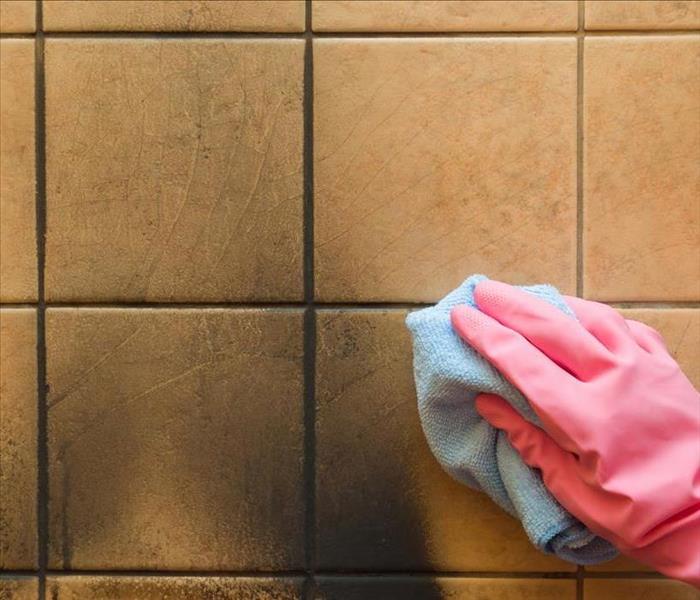How Do I Get Rid Of The Smell Of Fire Damage From Contents?
4/21/2020 (Permalink)
 Call our experts after you experience a fire disaster, we have training in fire & smoke restoration, odor control, upholstery & fabric cleaning.
Call our experts after you experience a fire disaster, we have training in fire & smoke restoration, odor control, upholstery & fabric cleaning.
SERVPRO Helps in Dealing with Fire and Smoke Issues by Cleaning Dover Properties Where Damage is Identified
Bad odor is a common outcome after fire incidents affect properties. The odor might affect different things, including structural components or the contents held within the premises. When carrying out the restoration process, it is easy to overlook contents, especially when they do not exhibit signs of physical damage. However, looks can be deceiving, so there is a need to clean and deodorize various contents in a house to remove all traces of fire-related odors in Dover.
Which contents are likely to emit odor?
Fire and smoke cleaning when there is damage in your Dover property requires a skillful approach to guarantee a positive outcome. Unlike other forms of fire damage, the areas where odor emanates from might have direct or indirect fire damage. Remember, smoke, which is responsible for most odors, filters effortlessly to most sections of the house through convection air currents. Contents made from non-porous materials such as plastic can only produce an odor when physically affected by the fire. However, other contents made from porous and semi-porous materials allow penetration of odor, especially when exposed to smoke. Such contents can emit odor even when no physical damage is noticeable and include:
- Wooden furniture
- Upholstery items
- Fabrics
Is the smell of smoke harmful?
The smell your nose picks up is more of an alert signal that there is an underlying issue. It may not have a significant effect apart from the discomfort it causes you. However, the underlying issues that cause the smell can be harmful to the house occupants or even lead to property damage over time.
If the smell emanates from aerosols or particulate matter suspended in the air, there is a significant problem since such materials can cause respiratory issues when breathed in over extended periods. Our SERVPRO technicians take corrective steps such as ventilating the area to remove the particulate matter, thus eliminating the risks they pose as well as the odor they produce. In most cases, we use axial air movers, which produce high volumes of air, thus forcing the particulate-filled air out of the property.
Residue deposits on contents can also cause the smoky smell you experience. Residues such as soot have corrosive properties, which can damage finishes on contents or cause stains. Removing the residue helps protect the items from permanent damage while also dealing with the odor.
What steps are crucial for odor removal?
- Removal of charred materials
- Residue cleanup from contents
- Ventilating rooms
- Deodorizing affected contents
Odor removal is a multistep process that requires a combination of different steps to achieve the intended goal. Our SERVPRO technicians start by evaluating the loss site to establish crucial issues that need attention. We remove contents damaged beyond repair for disposal. We also use specialized cleaning procedures such as soda blasting to remove charring from surfaces on salvageable furniture or other wooden contents.
Most contents require a thorough cleaning to remove soot and other smoke residues that they collect during the fire. We use various approaches, including spray wiping and immersion, depending on the material or other characteristics of an item. Our technicians also have skills to disassemble some items such as chandeliers or electrical fittings such as lighting accessories to carry out the cleaning process effectively. Where necessary, we use specialized cleaning equipment such as sonic cleaners and upholstery cleaning equipment to deal with various forms of soiling.
How does deodorization help?
Although removing soils such as soot eliminates a certain percentage of the odor experienced after fire incidents, it is hard to purge all smells through cleaning alone. Deodorizing contents helps breakdown remaining odor molecules. Since some odor molecules penetrate beyond the surface of materials, deodorization is the only way to reach such odor molecules.
Different procedures are necessary for deodorization to be successful. Our SERVPRO technicians mix water-based deodorizers with the cleaning agents we use when cleaning some contents. We also apply deodorizers through:
- Direct spraying
- ULV fogging
- Thermal fogging
Methods such as ULV fogging deliver the deodorizer in the atomized state while thermal fogging recreates the conditions of odor penetration by mimicking smoke. The two methods allow deeper penetration into materials reaching all odors. The deodorizer can pair with odor molecules neutralizing them or work in other ways, such as digesting or sanitizing. From experiences gained over the years while restoring fire-damaged properties, our technicians understand the best approaches to tackle each situation. In many cases, we combine different deodorization techniques to achieve the desired goal or to quicken the process.
The odor emanating from contents can ruin the outcome of fire damage restoration in your Hopatcong, Jefferson, or Stanhope home. SERVPRO of Dover / Stillwater has experienced crews that can clean up and deodorize all items eliminating all odors from the fire, "Like it never even happened." Call us at (973) 810-2825.






 24/7 Emergency Service
24/7 Emergency Service